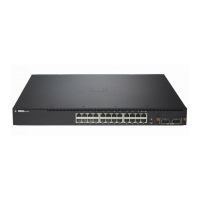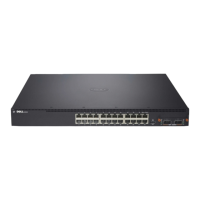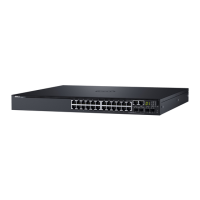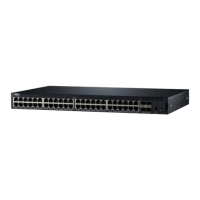Managing a Switch Stack 147
What is Stacking Standby?
A standby unit is preconfigured in the stack. If the current stack master fails,
the standby unit becomes the stack master. If no switch is pre-configured as
the standby unit, the software automatically selects a standby unit from the
existing stack units.
When the failed master resumes normal operation, it joins the stack as a
member (not a master) if the new stack master has already been elected.
The stack master copies its running configuration to the standby unit
whenever it changes (subject to some restrictions to reduce overhead). This
enables the standby unit to take over the stack operation with minimal
interruption if the stack master becomes unavailable.
Operational state synchronization also occurs:
• when you save the running configuration to the startup configuration on
the stack master.
• when the backup unit changes.
What is Nonstop Forwarding?
Networking devices, such as the PowerConnect 7000 Series switches, are
often described in terms of three semi-independent functions called the
forwarding plane, the control plane, and the management plane. The
forwarding plane forwards data packets and is implemented in hardware. The
control plane is the set of protocols that determine how the forwarding plane
should forward packets, deciding which data packets are allowed to be
forwarded and where they should go. Application software on the stack master
acts as the control plane. The management plane is application software
running on the stack master that provides interfaces allowing a network
administrator to configure the device.
The Nonstop Forwarding (NSF) feature allows the forwarding plane of stack
units to continue to forward packets while the control and management
planes restart as a result of a power failure, hardware failure, or software fault
on the stack master. This type of operation is called nonstop forwarding.
When the stack master fails, only the switch ASICs on the stack master need
to be restarted.
To prevent adjacent networking devices from rerouting traffic around the
restarting device, the NSF feature uses the following three techniques:
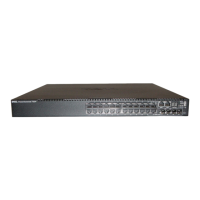
